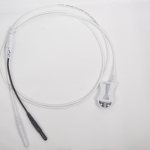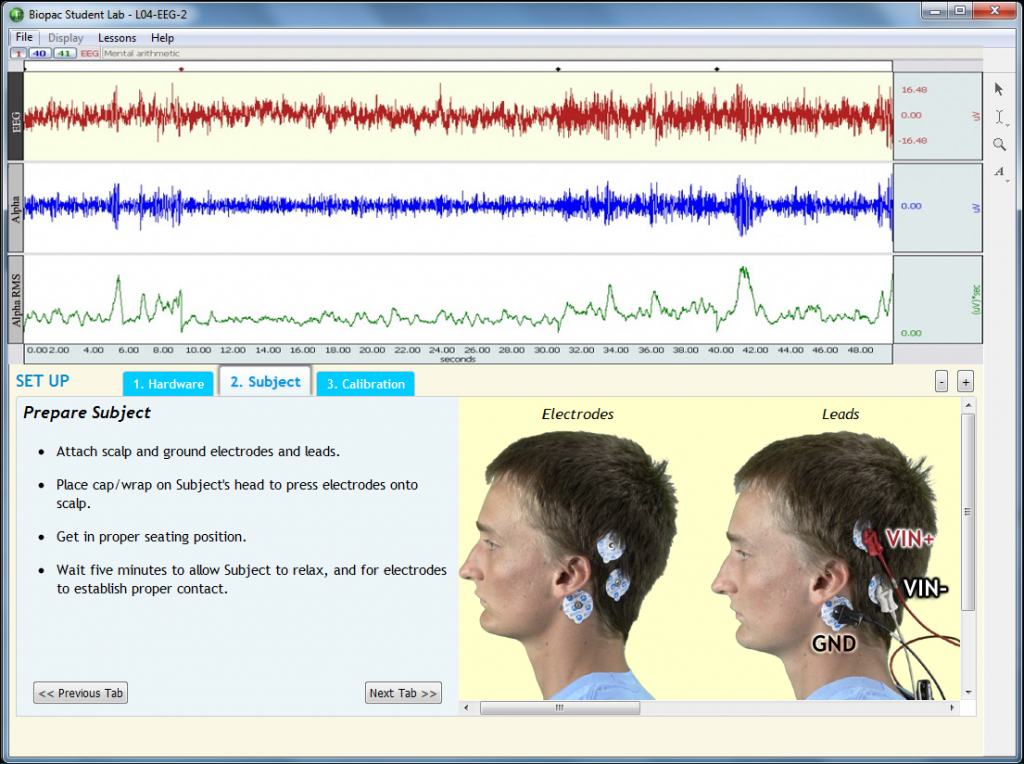Ground vs. reference for EEG recording
|
The terminology for electrical connections to human subjects is not universally agreed upon. “Ground” and “reference” are often used interchangeably. This is not a good practice as there are different purposes for different connections. Ground and reference are better understood as two different types from the perspective of both physiology and amplifier design. BIOPAC uses a relatively pervasive terminology here.
|
Good, Better, Best:
|
 In a unipolar setup, there will be one reference electrode, and the potential difference between this electrode (connected to Vin-) and every other electrode on the head (connected to Vin+ on separate amplifiers) will be measured.
In a unipolar setup, there will be one reference electrode, and the potential difference between this electrode (connected to Vin-) and every other electrode on the head (connected to Vin+ on separate amplifiers) will be measured.
For bipolar recordings, each active (Vin+) electrode will have its own reference (Vin-) connection.
BIOPAC Systems use a common ground connection for all amplifiers that are electrically connected to each other (i.e., part of the same MP system and not passing through a wireless stage as the BioNomadix modules do). In these cases, there should not be more than one ground connection to the subject unless all but one of the ground connections are through AC coupled leads. For instance, recordings made through a single MP36 system should have only one ground connection to the subject. Similarly, recordings made through EEG100C or EEG100C-MRI amplifiers all connected to a single MP160 system should have only one ground connection (total!) to the subject. BioNomadix wireless physiology data systems necessarily have a separate ground for each transmitter (note that each transmitter has two amplifiers on it). In this case, each transmitter should have one ground connection to the subject even if all transmitters communicate with the same MP160 system.

Stay Connected